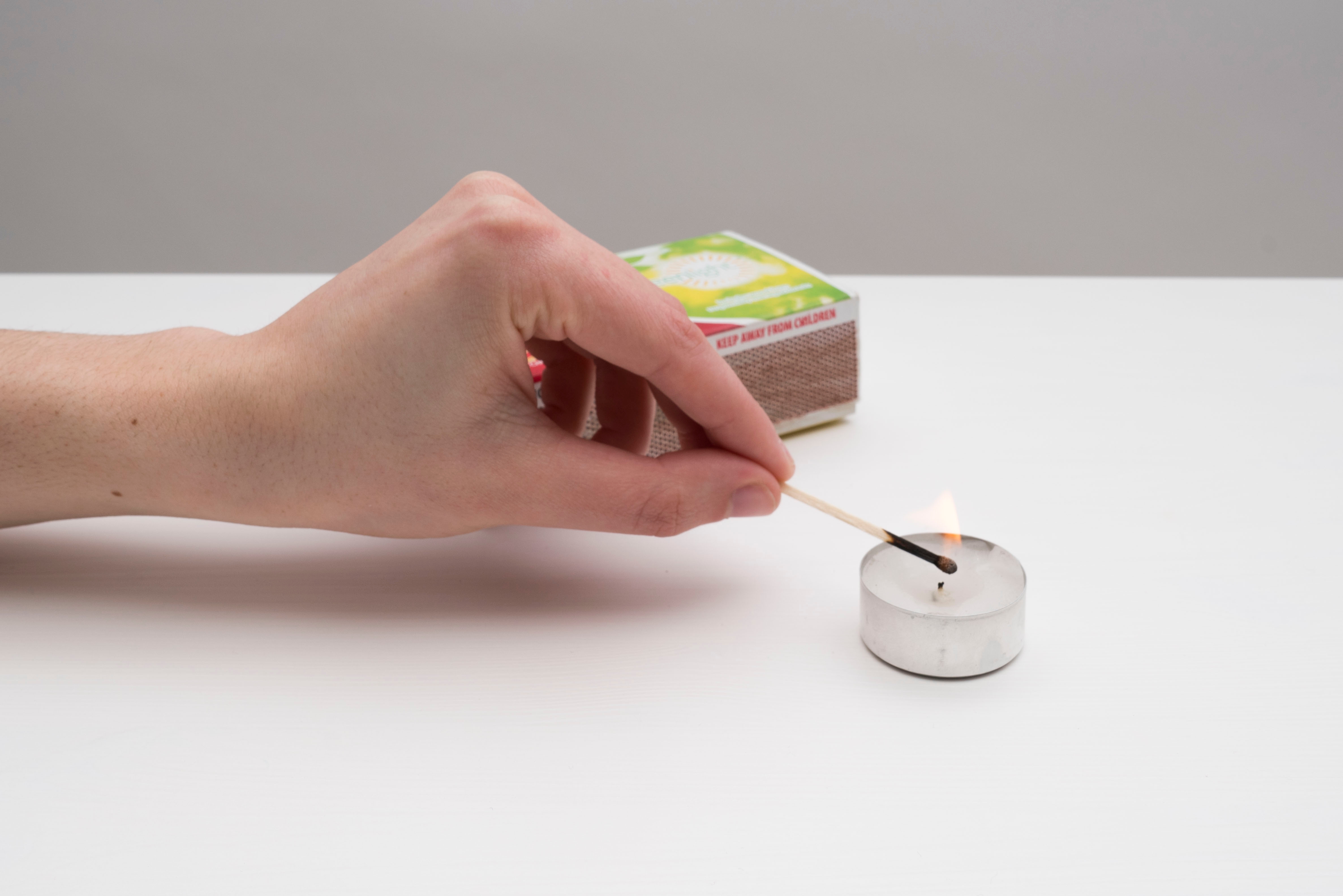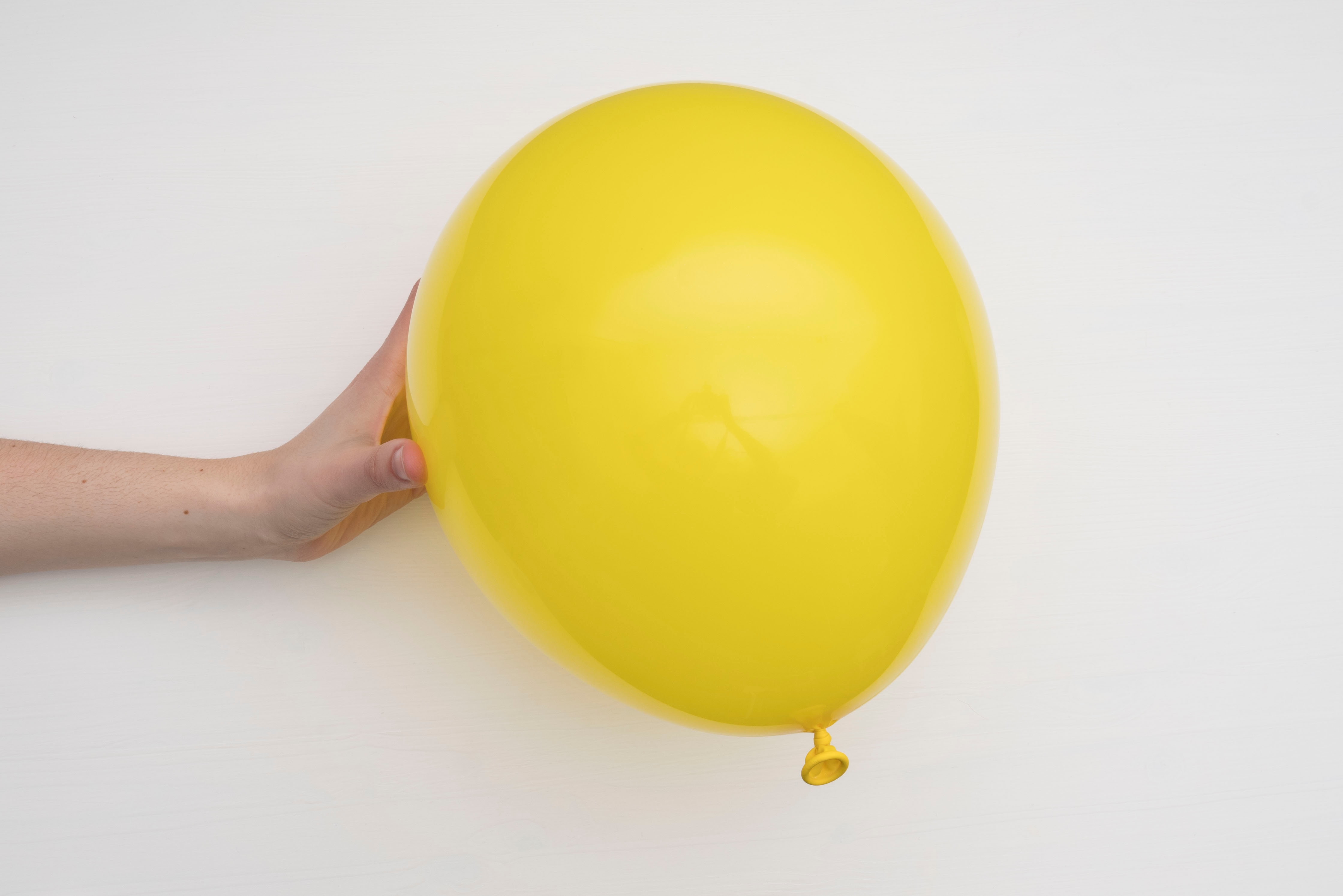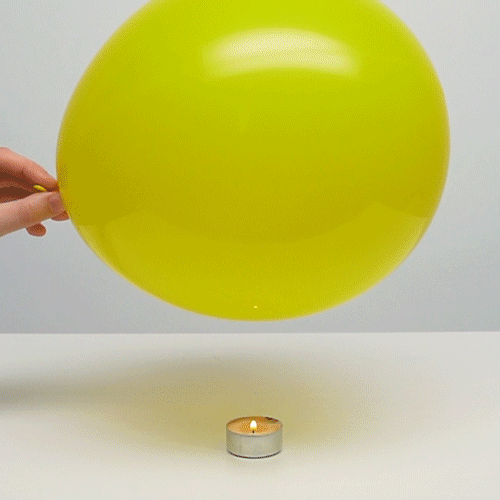Step-by-step tutorial
Learn more
POP! A tiny hole forms in the rubber surface of a balloon, and the balloon explodes. The elastic tension of the rubber, like hundreds of mini springs hooked together in a net, was all that kept the pressurized air inside. A hole in the rubber is like losing one of the hooks in the net of springs — the rubber springs away from the hole and tears the balloon wide open as the air pushes out. A hole can start from something sharp, like a pin, but it can also happen if the rubber material is weakened. That’s what you’re going to be trying out.
When rubber things get hot, they get weak. They become bendy and stretchable like taffy, and they stop holding or springing back into their shape. If a balloon gets close to a heat source, like a candle, the rubber that’s closest to the heat will weaken. Instead of maintaining that spring-like tension it normally has, the rubber will start to stretch out. As the air inside pushes against it and the rest of the balloon pulls on it, the hot rubber will stretch thinner and thinner until… POP! It breaks and the balloon explodes.
There is a way to prevent this kind of popping, though. You need a heat sink: something that can absorb the heat from the candle instead of letting it go into the rubber. The best thing for this is actually plain, everyday water. Water takes up heat more easily than rubber does, and it can hold a lot of heat without its temperature increasing too much (you know how the weather is more mild by the ocean or a lake? These properties of water are why!). Essentially, water can steal the heat right out of the rubber to keep it from weakening and melting. So with a bit of water inside as a heat sink, you can keep a hot balloon from popping!Step 1
Gather your materials.

Step 2
Light a tealight candle. You may need a grownup to assist you.

Step 3
Blow up a balloon and tie it off.

Warning
The next step could get loud!
Step 4
Hold the balloon about 3 inches above the flame of the candle for about five seconds. What happens?

Step 5
Use a funnel to pour some water into the second balloon. It doesn’t need to be a lot of water--just enough to create a little pool of water at the bottom of your balloon when you blow it up!

Step 6
Blow up the balloon and tie it off.

Final result!
Hold the balloon about 3 inches above the flame of the candle, making sure that the pool of water in the balloon is directly above the flame. What happens?

